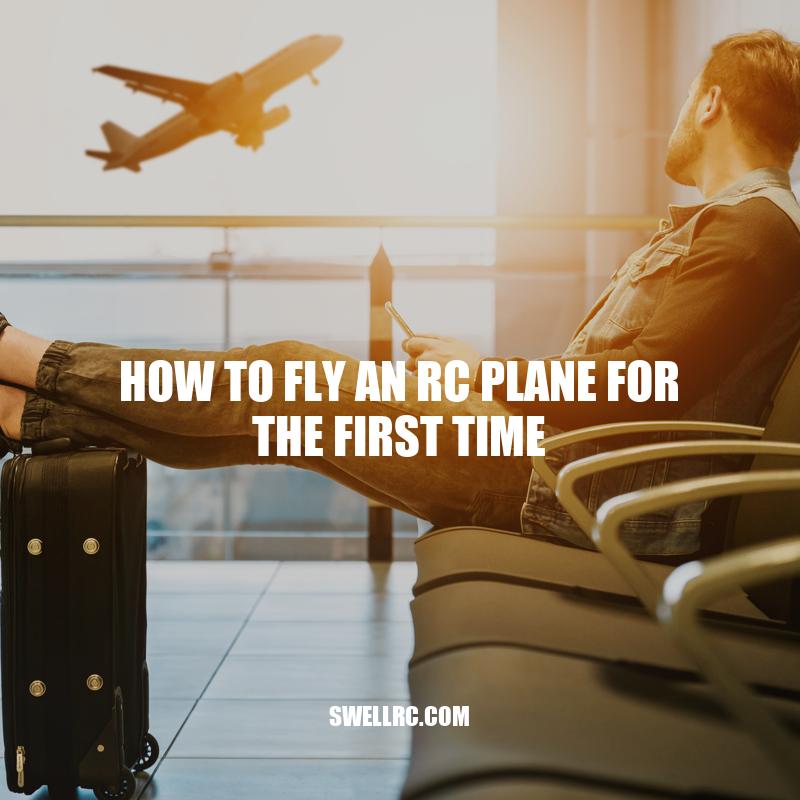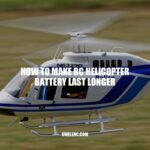How to Fly an RC Plane: A Beginner’s Guide
Learning how to fly an RC plane for the first time can be a daunting experience. It requires patience, determination, and the right mindset to overcome the challenges and enjoy the thrill of controlling a miniature aircraft in the sky. However, with the right approach and guidance, anyone can learn how to fly an RC plane and discover the joy of this exciting hobby. This beginner’s guide will provide you with some useful tips and steps to follow when you’re first starting out. From choosing and preparing your equipment to taking off and landing safely, you’ll learn the basics of flying an RC plane and prepare yourself for a fun and rewarding experience. So let’s dive into the world of remote-controlled aviation and discover the magic of flight.
Getting Started
Before you take your first flight, it’s essential to have a basic understanding of what you’ll need to get started:
RC Plane Types
There are a few different types of RC planes available, so it’s important to choose the right one for your needs. Here are some of the most popular categories:
- Trainers: Easy to fly, stable, and forgiving. Great for beginners.
- Sport/Scale: More advanced, faster, and more maneuverable. Require more skill to fly.
- Warbirds: Designed to look like real planes from World War II. Often have more complex controls and features.
- 3D/Acro: Designed for aerobatics and tricks. Require expert-level skills to master.
RC Plane Equipment
Once you’ve decided on the type of RC plane you want, you’ll also need to make sure you have the right equipment to get started:
- RC Transmitter: The controller that you’ll use to control your plane. Make sure you pick a reliable one with enough range and features.
- RC Receiver: The device that receives the signals from your transmitter and sends them to your plane’s servos.
- RC Battery: The power source for your plane. Make sure you use the recommended type and capacity for your plane.
- Charger: The device that charges your battery. Make sure you use a compatible and safe charger.
- Tools: You’ll need some basic tools to assemble and maintain your plane, such as pliers, screwdrivers, scissors, and glue.
RC Plane Brands
There are many brands of RC planes and equipment available, so it can be overwhelming to choose the right one. Here are some of the most popular and trusted brands:
- Horizon Hobby: Offers a wide range of RC planes, helicopters, drones, and accessories for all levels of flying experience.
- Tower Hobbies: Specializes in RC planes, boats, cars, and trucks, and also provides online resources and tutorials for beginners.
- HobbyZone: Focuses on easy-to-fly trainers and other entry-level planes, with simple setups and reliable performance.
- E-flite: Offers high-quality and realistic planes, jets, and helicopters, with detailed design and advanced features.
By choosing the right type of RC plane, equipment, and brand, you can set yourself up for success and enjoy a smooth and safe flying experience. Check out Horizon Hobby and Tower Hobbies for a wide range of RC products and resources.
How many types of planes are there?
There are many different types of planes designed for different purposes. Here are some common types of planes:
- Commercial Planes
- Military Planes
- Private Planes
- Amphibious Planes
- Helicopters
- Glider Planes
- Ultralight Planes
To learn more about planes and aviation, visit websites such as Aviation Today or Flying Magazine. If you are interested in purchasing or renting a plane, check out companies like GlobalAir or Trade-A-Plane.
Pre-flight Checks
Before you start flying your RC plane, it’s essential to check that everything is in order. Here’s what you should do:
Plane Inspection
Take a close look at your plane and make sure that:
- The wings are straight and level
- The control surfaces move freely and smoothly
- The landing gear is secured and aligned
- The propeller is balanced and undamaged
- The battery and receiver are securely attached
- The plane is free of defects or cracks
Battery Check
Your plane’s battery is one of the most critical components, so make sure that:
- The battery is fully charged and has enough power and capacity for your flight
- The battery connector is clean and tight
- The battery is not damaged or bloated
- The battery voltage is within the recommended range
- The battery type and charger are compatible
Balance Adjustment
If your plane is not balanced, it may be unstable in the air and hard to control. You can balance your plane by:
- Moving the battery forward or backward
- Adding weights to the nose or tail
- Adjusting the wing’s angle of incidence
You can use a simple tool called a balance or CG (center of gravity) meter to find the right balance point for your plane. This tool consists of a metal rod with two clips that you can attach to your plane’s wing or fuselage. When you hold the meter at the balance point, your plane should be level and not tilt forward or backward.
Here’s an example of how to use a CG meter:
| Steps | Description | Image |
|---|---|---|
| Step 1 | Attach the CG meter to your plane’s wings, as instructed. |  |
| Step 2 | Hold the meter at the designated balance point. |  |
| Step 3 | Mark the balance point on your plane’s wings. |  |
| Step 4 | Adjust the battery or weights until the plane balances at the same point. |  |
By doing these pre-flight checks, you can ensure that your RC plane is in good condition and ready to take off.
How do you fly an RC plane for the first time?
Here are some basic steps to follow when flying an RC plane for the first time:
- Start by reading the instruction manual that came with the plane.
- Choose a wide-open space with no obstacles or people around.
- Perform a pre-flight check to ensure the plane is in good condition.
- Turn on the transmitter and then the plane.
- Begin with simple maneuvers such as flying in circles or straight lines to get a feel for the controls.
- Avoid sudden movements of the sticks or else the plane may lose control.
- If you begin to lose control, release the sticks and allow the plane to recover itself.
- Gradually increase the complexity of your maneuvers as you become more comfortable with the controls.
- Land the plane by slowly reducing throttle and gently bringing it down.
Remember, practice makes perfect! Don’t be discouraged if you crash your plane a few times. Most of the RC planes now come with simulators, which allows you to practice flying before you go outside. You can check different RC planes and simulators on websites such as Horizon Hobby, Hobbyking, and Amazon.
Taking Off and Flying
So, you’re ready to fly your RC plane for the first time. Here are some tips to make your flight as smooth and enjoyable as possible:
Takeoff
Before you take off, make sure that:
- Your plane is facing away from you
- Your throttle is at a low level
- Your plane is centered and balanced
When you’re ready, push the throttle slowly and steadily until your plane starts moving forward. Keep your eyes on your plane and adjust the throttle as needed to maintain a safe speed. Once your plane gains enough speed, it should lift off the ground naturally. Don’t pull the elevator stick too abruptly or too much, or your plane may stall or go too high too fast.
Flying Tips
As you fly your RC plane, keep in mind that:
- RC planes are affected by wind, turbulence, and other factors that can make them unstable or hard to control
- You need to maintain visual contact with your plane at all times and avoid flying too high or too far away
- You should practice basic maneuvers such as turns, climbs, and descents before attempting more advanced ones
- You should try to maintain a smooth and balanced flight by adjusting your controls and speed in a coordinated way
- You should pay attention to your battery level and avoid draining it completely, as this can damage your plane and may cause it to crash
Landing
When it’s time to land your RC plane, make sure that:
- Your plane is facing towards you
- You have reduced your throttle to a low level
- Your plane is in a stable and level position
To land your plane, you can either let it glide down gently or use the elevator stick to make it descend gradually. Make sure to avoid obstacles, and try to touch down with your landing gear level and your plane’s speed low. If your plane bounces or swerves, you can use the rudder stick to correct its direction. Once your plane has come to a stop, you can turn off your motor and celebrate your successful flight!
Conclusion
Flying an RC plane can be a thrilling and rewarding experience, but it also requires patience, practice, and respect for safety guidelines. By following the tips and techniques outlined in this article, you can increase your chances of having a fun and safe flight with your RC plane. Remember to start with a simple and reliable model, check your plane and battery before flying, and practice basic skills before attempting complex ones. With time and dedication, you can become a skilled RC pilot and explore the many possibilities of this fascinating hobby.



